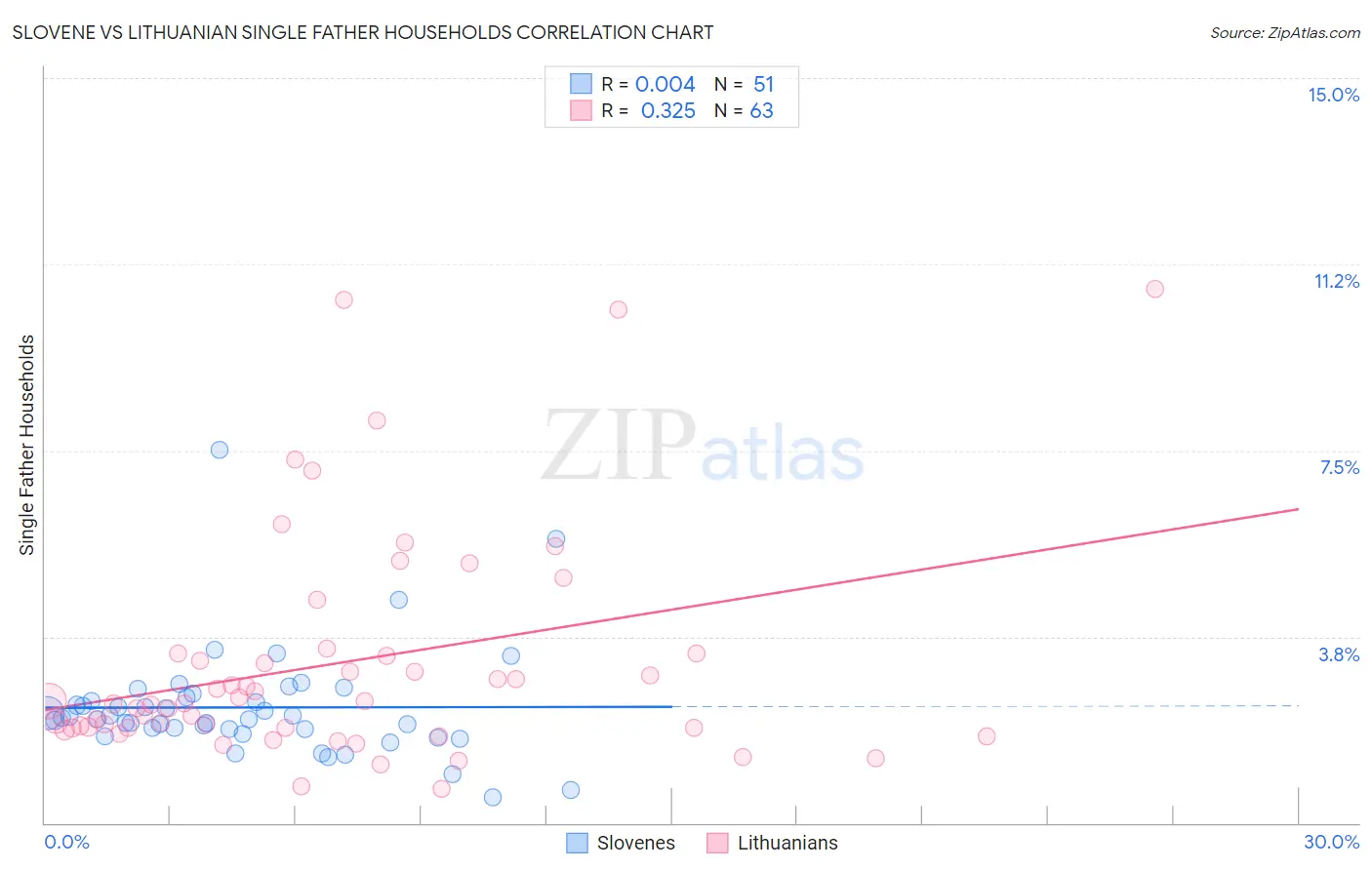Slovene vs Lithuanian Single Father Households
COMPARE
Slovene
Lithuanian
Single Father Households
Single Father Households Comparison
Slovenes
Lithuanians
2.2%
SINGLE FATHER HOUSEHOLDS
98.5/ 100
METRIC RATING
107th/ 347
METRIC RANK
2.1%
SINGLE FATHER HOUSEHOLDS
99.5/ 100
METRIC RATING
87th/ 347
METRIC RANK
Slovene vs Lithuanian Single Father Households Correlation Chart
The statistical analysis conducted on geographies consisting of 259,682,092 people shows no correlation between the proportion of Slovenes and percentage of single father households in the United States with a correlation coefficient (R) of 0.004 and weighted average of 2.2%. Similarly, the statistical analysis conducted on geographies consisting of 416,616,302 people shows a mild positive correlation between the proportion of Lithuanians and percentage of single father households in the United States with a correlation coefficient (R) of 0.325 and weighted average of 2.1%, a difference of 2.3%.

Single Father Households Correlation Summary
| Measurement | Slovene | Lithuanian |
| Minimum | 0.52% | 0.69% |
| Maximum | 7.5% | 10.7% |
| Range | 7.0% | 10.0% |
| Mean | 2.3% | 3.2% |
| Median | 2.1% | 2.4% |
| Interquartile 25% (IQ1) | 1.9% | 1.9% |
| Interquartile 75% (IQ3) | 2.5% | 3.4% |
| Interquartile Range (IQR) | 0.66% | 1.5% |
| Standard Deviation (Sample) | 1.1% | 2.3% |
| Standard Deviation (Population) | 1.1% | 2.3% |
Demographics Similar to Slovenes and Lithuanians by Single Father Households
In terms of single father households, the demographic groups most similar to Slovenes are Immigrants from Southern Europe (2.2%, a difference of 0.11%), Palestinian (2.2%, a difference of 0.23%), Alsatian (2.1%, a difference of 0.60%), Lebanese (2.1%, a difference of 0.62%), and Argentinean (2.1%, a difference of 0.64%). Similarly, the demographic groups most similar to Lithuanians are Bhutanese (2.1%, a difference of 0.13%), Immigrants from Armenia (2.1%, a difference of 0.18%), Immigrants from Pakistan (2.1%, a difference of 0.19%), Immigrants from Guyana (2.1%, a difference of 0.43%), and Romanian (2.1%, a difference of 0.52%).
| Demographics | Rating | Rank | Single Father Households |
| Lithuanians | 99.5 /100 | #87 | Exceptional 2.1% |
| Bhutanese | 99.5 /100 | #88 | Exceptional 2.1% |
| Immigrants | Armenia | 99.5 /100 | #89 | Exceptional 2.1% |
| Immigrants | Pakistan | 99.5 /100 | #90 | Exceptional 2.1% |
| Immigrants | Guyana | 99.4 /100 | #91 | Exceptional 2.1% |
| Romanians | 99.4 /100 | #92 | Exceptional 2.1% |
| Croatians | 99.3 /100 | #93 | Exceptional 2.1% |
| Ukrainians | 99.3 /100 | #94 | Exceptional 2.1% |
| Bermudans | 99.2 /100 | #95 | Exceptional 2.1% |
| Arabs | 99.2 /100 | #96 | Exceptional 2.1% |
| Immigrants | Moldova | 99.1 /100 | #97 | Exceptional 2.1% |
| Guyanese | 99.1 /100 | #98 | Exceptional 2.1% |
| South Africans | 99.1 /100 | #99 | Exceptional 2.1% |
| Immigrants | Northern Africa | 99.0 /100 | #100 | Exceptional 2.1% |
| Immigrants | Western Europe | 98.9 /100 | #101 | Exceptional 2.1% |
| Argentineans | 98.9 /100 | #102 | Exceptional 2.1% |
| Lebanese | 98.9 /100 | #103 | Exceptional 2.1% |
| Alsatians | 98.9 /100 | #104 | Exceptional 2.1% |
| Palestinians | 98.6 /100 | #105 | Exceptional 2.2% |
| Immigrants | Southern Europe | 98.6 /100 | #106 | Exceptional 2.2% |
| Slovenes | 98.5 /100 | #107 | Exceptional 2.2% |